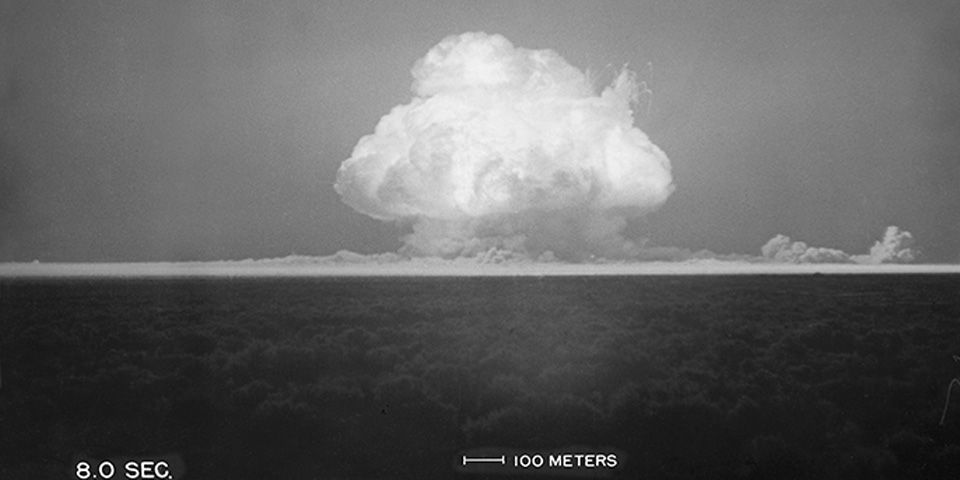By: Ronald (Ray) Wu
On July 16, 1945, the first nuclear bomb was detonated as a test in Alamogordo, New Mexico. To ensure safety, Trinity, the nuclear weapon test subject, was detonated in a desert. Although this event occurred nearly a century ago, recent studies suggest that the effects of this experiment might have affected populations and wildlife as long as 10 days after the detonation. According to The New York Times, people in 46 US states, Canada, and Mexico were affected the most.
During the test, experimenters collected data to estimate how much energy was used on various parts of the detonation process. According to History, the Trinity bomb was as powerful as 21,000 tons of TNT. The Trinity bomb was much denser in energy than that much TNT, weighing less than 100 tons.
The detonation was much larger than expected. The glowing mushroom cloud expanded very quickly and steadily; it looked like it was defying gravity. The cloud peaked when it hit a height of 70,000 feet. Once the news spread, everyone was in shock. The explosion was much larger than expected. Many witnesses were both traumatized by the recordings and the sound.
Much of the radiation produced by the detonation migrated to unwanted areas of the United States. Within 10 days, it spread all over the country, and flooded into foreign ones, too. Within ten days, the majority of North America was contaminated with radiation. Almost everyone was exposed to levels that could potentially cause side effects.
“They were aware that there were radioactive hazards, but they were thinking about acute risk in the areas around the immediate detonation site,” Nuclear historian Alex Weller stein declared. “They were not really thinking about effects of low doses on large populations, which is exactly what the fallout problem is.”
Decades after the detonation, a lack of information halted unfinished studies of Trinity test’s fallout. Analyzing Trinity’s explosion was much harder than it was to analyze Able, a different nuclear bomb that was tested in Nevada during 1951, because technology was poorer in 1945. It was observably easier to understand that there was a problem in Able’s explosion because technology advanced during those few years.
Scientists determined that Able caused a lot of radiation as well. A map shows the distribution of radioactive traces on a flat map of the US and revealed that radiation was higher than normal, especially in areas closer to Nevada.
“For the first time, we had the most accurate hourly reconstruction of the weather back to 1940, around the world,” said a co-author of the story, Dr. Compo. “Every single event that puts something in the air, no matter than it is, can now be tracked, by the hour.”
“It’s a very comprehensive, well-executed study,” said M. V. Ramana, a professor in a disarmament at the University of British Columbia. “I expected that the old estimates were understating what was actually deposited,” he said.
Many scientists believe the study of Trinity’s detonation was very important, because it shows how detonations affect North American civilians. It also provides evidence suggesting that scientists and government officials should minimize nuclear detonations. Even though passing a frontier by making and testing the first nuclear bomb was shocking for the United States, after learning about the harmful effects of the radiation produced in the process, many civilians don’t believe it’s worth it.
Dr. Philippe says that Trinity’s detonation accounts for about 87% of total fallout radiation in New Mexico, an amount that put New Mexicans into degraded living conditions.
“This new information about the Trinity bomb is monumental and a long time moving. We’ve been waiting for an affirmation of the history told by generations of people from Tularosa who witnessed the Trinity bomb and talked about how the ash fell from the sky for days afterward,” claims Tina Cordova, a co-founder of the consortium.
Even now, scientists are discovering past events from almost a century ago. Learning about the side effects solves an aged mystery about the side effects after the detonation that unanticipatedly happened. The studies taught scientists a lot about why reducing nuclear tests or experiments is important and what we can do to prevent risking people’s lives. Detonation experiments now are being prevented so radiation doesn’t spread so uncontrollably again.











